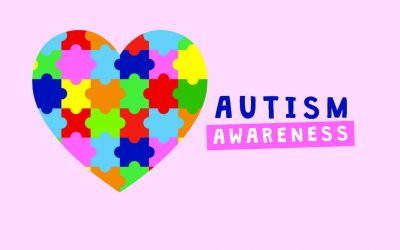Response to 60 Minutes 2/Good Morning America Pieces on Autism/Rapid Prompting
An article on the Good Morning America program, “Come Together: Parents of Autistic Children”, is reprinted further below in today’s SAR.
From Elizabeth Kilpatrick at Cure Autism Now.
Many families and autism professionals have written asking about
Tito,his mother Soma, our son Dov, and the new teaching method Soma has
pioneered. This method is called the Rapid Prompting Method (RPM). We are
working with Soma to produce a teaching manual for parents, teachers and
professionals, which describes step-by-step how to implement this teaching
method. This is not a cure for autism. That will require much more medical
research, and we are working hard on that front every day. This is a
teaching method that has met with some early success. And we very much agree
with the basic assumption, that how an autistic person acts on the outside
is not necessarily a reflection of who they are and how they think on the
inside. We would rather assume competence.
Please visit our web site at www.cureautismnow.org to learn more
about Cure Autism Now, our research programs and how to get involved. There is
also an area on the site that contains more information about Tito, his
poetry and his book, which may be ordered online. Please note that from our
website you may sign up for the CAN-Alert e-mail list which provides updates
and news directly to your e-mail.
We appreciate your interest in CAN and in the Rapid Prompting Method.
The study of this method is part of CAN’s larger Neuroplasticity Initiative
and which is being led by Dr. Michael Merzenich from the University of
California at San Francisco. Dr. Merzenich is an international authority in
the field of neuroplasticity and has pioneered important technology to help
people with dyslexia and developed Fast For Word.
The most exciting news in neuroscience in the last five years is the
idea of neuroplasticity – the concept that the brain continues to grow and
change throughout life. There have been amazing breakthroughs in the
treatment of stroke and dyslexia through neural retraining. Using
specialized education techniques, the brain is able to rewire around damaged
or undeveloped areas and re-regulate the way it deals with sensory input.
CAN’s Neuroplasticity Initiative would compile an integrated team of
scientific leaders to focus on bringing these techniques to bear on autism
to find ways to retrain the brains of people with autism – from the very
young, to adults and even to those most affected who in many instances are
not able to speak at all.
As parents we understand the sense of urgency that many of you feel
in getting this method to your own child. Soma is working hard on getting a
first draft of the RPM manual written, and we hope to have a beta test
version of it available on the CAN website by June 1, 2003. People will be
able to try it out and give feedback before the manual is published.
As we search for effective biological treatments and a cure for
autism, CAN is also always looking for ideas that can make an impact for
people with autism today. Our goal is to bring the cutting edge of
technology to bear upon the communication problems with autism. This
initiative is actively creating a new hybrid field, bringing together the
wizards of technology and neuroscience along with experts on autism,
therapists and people with autism themselves.
We are very grateful to the scientists who have been working with
Tito and Soma, studying the RPM method and to our donors, the Cure Autism Now
Board and the many parents and professionals like you who have supported CAN
and made it possible for Tito and Soma to bring this new teaching method to
the U.S.
Best Wishes,
Portia Iversen and Jon Shestack.
Answers to some questions you may have after seeing the 60 Minutes 2
or Good Morning America episode:
Q: Where can I order a tape of the 60 Minutes 2 episode?
A: Tapes can be ordered from CBS News. Please visit www.cbsnews.com
and click on 60 Minutes 2.
Q: Can Soma and Tito travel to our location and give a presentation
to our group?
A: We will give Soma your request. It is difficult for Tito to fly
and therefore he travels infrequently. We are helping Soma create a video
of Tito and some the children she has taught, so that she may give
presentations herself. She will respond to your request as soon as
possible.
Q: How can we learn more about this method? Is there an instruction
manual?
A: A manual is being written and the beta test version will be
available on the CAN website June 1, 2003 for testing and feedback before
publication.
Q: Can this method be taught to teachers and used in classrooms?
A: Yes
Q: Are there other schools using this method?
A: Not yet.
Q: Do you think this could work for other autistic children?
A: It is probable that many could learn to communicate better with
this method.
Q: Can Soma work with my child?
A: Not at this time, but the manual will help you get started.
Q: Are there any workshops available?
A: Not yet, but there will be in the future.
Q: What kind of letter board does Soma use?
A: She uses either an ABC or QWERTY (keyboard) configuration,
depending on whether the child knows the alphabet or not. The letters are
typed or written on a piece of paper or cardboard. Eventually she trains
the child to work on a portable keyboard such as the Alphasmart.
Q: My child can talk – could this method still help him?
A: There are many people with autism who are verbal, but tend to use
language more as a “stim” than for communication. Soma is testing the method
with verbal children whose speech is of limited use for communication. More
will be known about this in the next year.
Q: What research is being conducted on Soma’s method?
A: CAN is supporting several studies which address many different
aspects of this teaching method and the implications it has for
understanding autism.
Q: What type of research does CAN fund?
A: Cure Autism Now funds a variety of research. We fund genetics,
environmental co-factors in autism, neuroplasticity and a large portfolio of
basic biological research in autism. CAN also works to increase federal
funding of autism research and was responsible for the recent funding of 8
centers of Excellence in autism research by the National Institute of Mental
Health. Please visit the CAN website at
http://www.cureautismnow.org/research/research.cfm to get the latest
information.


